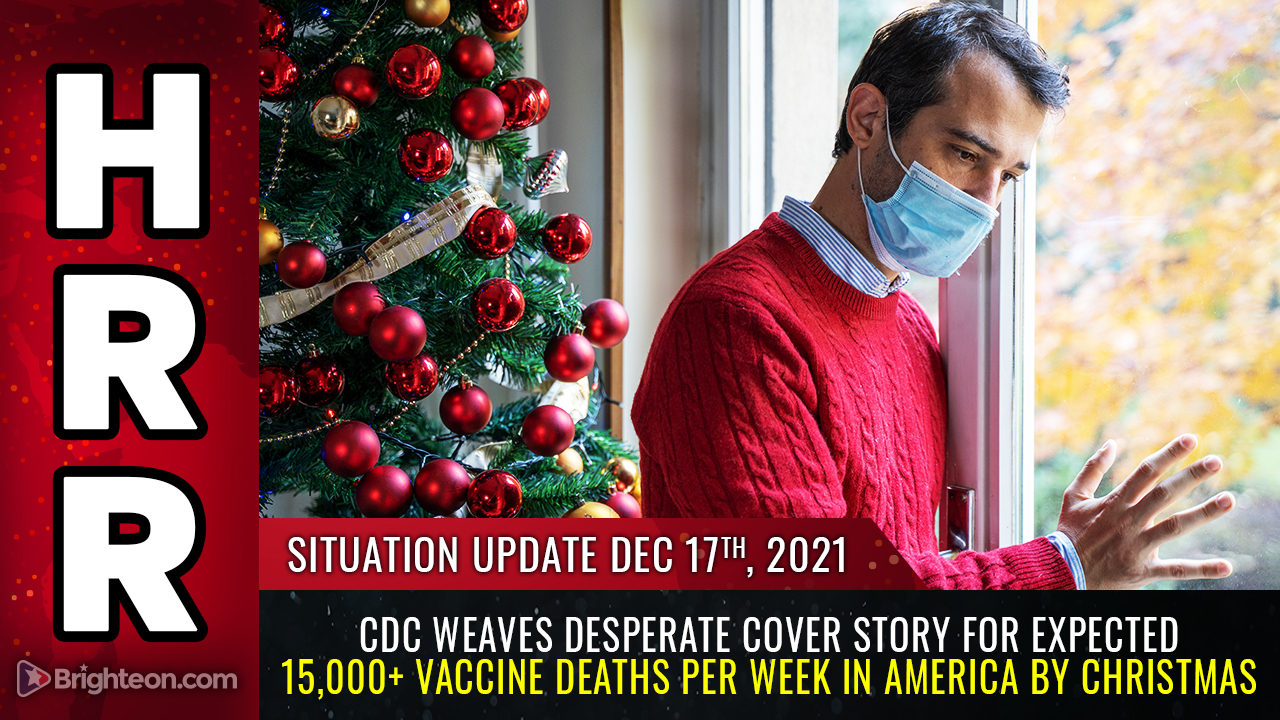Study finds US hospitals are not prepared for the next pandemic
07/13/2021 / By Ramon Tomey

Many hospitals in the U.S. were overwhelmed with the volume of patients who contracted the Wuhan coronavirus (COVID-19) during the pandemic’s early days. But a new study found that hospitals across the country may not be adequately prepared for the next pandemic. The study, which looked at data spanning a 10-year period, also found that medical facilities only had marginal improvements to their systems to handle future patient surges.
Researchers from the University of Maryland School of Medicine (UMSOM) and University of Maryland Medical Center (UMMC) authored the study, which was published July 2021 in the Journal of Healthcare Management. They first developed a tool called the Hospital Medical Surge Preparedness Index (HMSPI) to predict how well a hospital can handle a sudden influx of patients. The index took four factors into consideration – staff, supplies, space and systems.
The researchers then looked at data from the annual surveys conducted by the American Hospital Association (AHA) on more than 6,200 hospitals nationwide. The AHA surveys were done from 2005 to 2014. Aside from AHA survey data, the researchers also looked at data from the U.S. Census Bureau and the Dartmouth Atlas Project to find out population estimates and hospitals’ geographic service areas.
Finally, the researchers combined hospital metrics from the annual AHA surveys with the geographic data to calculate HMSPI scores for hospitals in each state. They found varying levels of increases in HMSPI from 2005 to 2014 in every state, indicating better preparedness to handle a medical surge on a yearly basis. They also discovered based on the scores that prior to the COVID-19 pandemic, ideal hospital readiness had not been achieved in any state.

Lead study author and UMMC Chief Clinical Officer Dr. David Marcozzi described his team’s paper: “Our work links objective healthcare data to a hospital score that assesses the ability to save lives in a disaster. It attempts to fill a glaring gap in the national conversation on the need for improved assessments and the opportunity for better hospital planning to assure readiness.
Marcozzi added: “The COVID-19 pandemic demonstrated that there is still plenty of room for improvement in the ability of our nation’s healthcare system to triage and manage multiple parents in a crisis. Our research is dedicated to those who lost their lives in this tragedy and other mass casualty events. We can do better.”
Hospitals can do better when it comes to medical surges
UMSOM Dean Dr. E. Albert Reece said: “The COVID-19 pandemic taught us that we need to be better prepared for the unexpected crisis. Having an important metric like the HMSPI could be a game-changer that ultimately saves lives during a surge by helping hospitals identify and fix their vulnerabilities.”
Such a metric would have helped New York City deal with a surge of hospitalized patients due to COVID-19. During the early weeks of the pandemic, hospitals in the city felt the pressure with 4,000 patients being sent to medical facilities. In early April 2020, ABC 7 shared footage taken from the Mount Sinai Queens hospital that showed its emergency room filled to the brim with COVID-19 patients.
On a regular hospital day, the hospital halls would be empty and neat. However, the footage showed COVID-19 patients filling the halls – illustrating the gravity of the situation. New York Gov. Andrew Cuomo said that time that such a scenario was “just the beginning.”
New York City later saw more than 24,000 COVID-19 fatalities during the first wave of the pandemic, which occurred in the spring. A December 2020 NPR report said that medical workers in the city learned the lesson hard way when hospitals became overwhelmed. Despite health workers learning more about COVID-19 as the months passed, many remained nervous about how hospitals are prepared for another surge.
Dr. Laura Iavicoli of the New York City Health and Hospitals Corporation said that time: “I think there’s a lot of anxiety about doing this a second time.” She added that while some of her colleagues at Elmhurst Hospital in Queens would soldier on, the anxiety and so-called “COVID fatigue” are undeniable. “The increase is definitely typical in [the] flu season, but knowing that we have just entered upon the second wave [of COVID-19[ and predicting what is to come, we’re a little even more cognizant than normal to make sure we leave capacity in all of our facilities,” she said.
However, other workers lamented about undergoing the same experience once more as some hospital administrators have not done enough to apply the lessons from March and April 2020. Critical care nurse Michelle Gonzales, who works at Montefiore Medical Center in the Bronx, said: “We’re scared. We’re afraid we’re going to have to go through this again.”
Visit Pandemic.news to read more articles about hospitals being prepared for sudden surges of COVID-19 patients.
Sources include:
Tagged Under: American Hospital Association, covid-19 pandemic, crisis, hospital preparedness, medical facilities, medical surge, medical workers, Public Health, US hospitals, Wuhan coronavirus




















